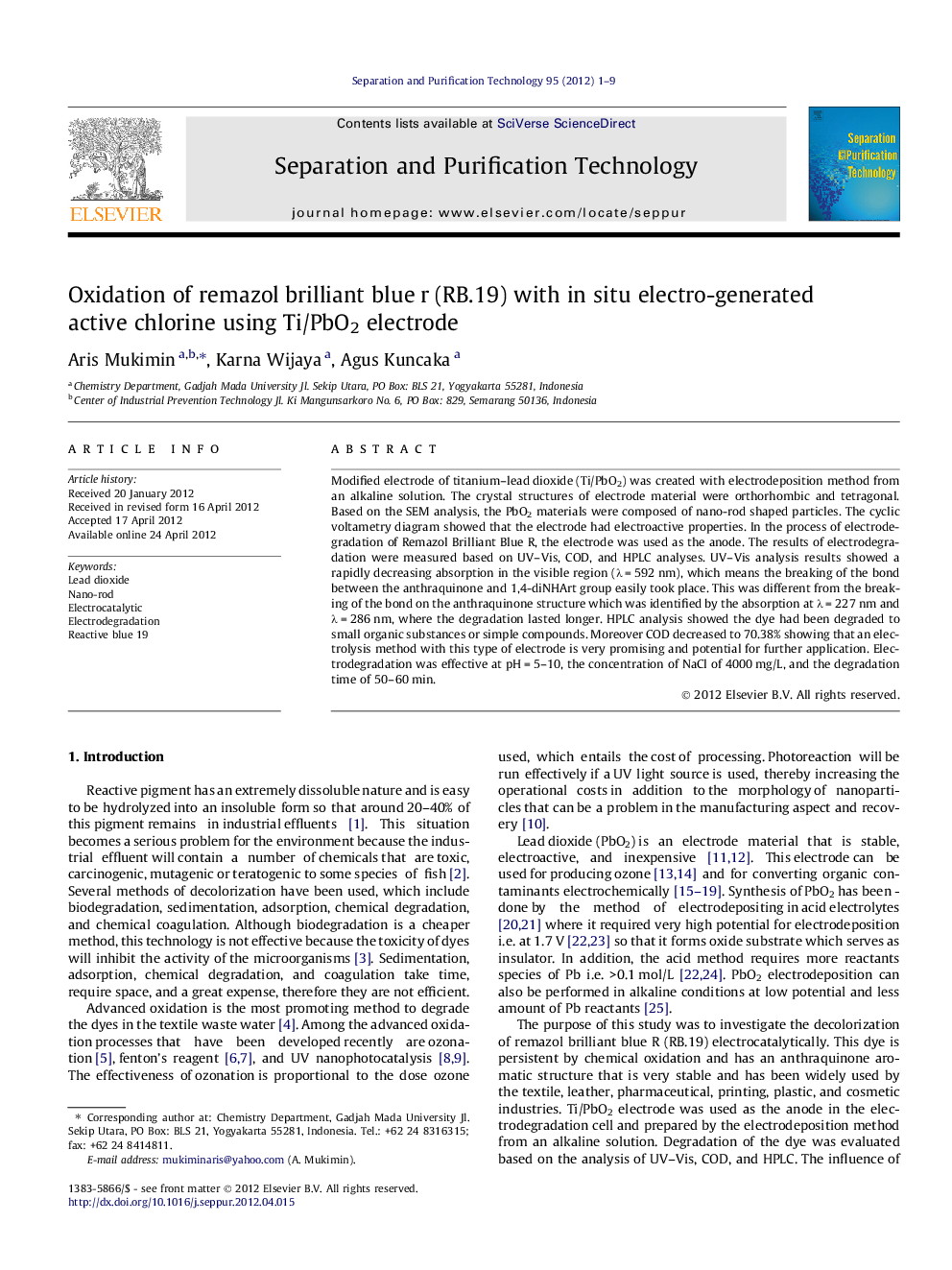| کد مقاله | کد نشریه | سال انتشار | مقاله انگلیسی | نسخه تمام متن |
|---|---|---|---|---|
| 642170 | 1457024 | 2012 | 9 صفحه PDF | دانلود رایگان |

Modified electrode of titanium–lead dioxide (Ti/PbO2) was created with electrodeposition method from an alkaline solution. The crystal structures of electrode material were orthorhombic and tetragonal. Based on the SEM analysis, the PbO2 materials were composed of nano-rod shaped particles. The cyclic voltametry diagram showed that the electrode had electroactive properties. In the process of electrodegradation of Remazol Brilliant Blue R, the electrode was used as the anode. The results of electrodegradation were measured based on UV–Vis, COD, and HPLC analyses. UV–Vis analysis results showed a rapidly decreasing absorption in the visible region (λ = 592 nm), which means the breaking of the bond between the anthraquinone and 1,4-diNHArt group easily took place. This was different from the breaking of the bond on the anthraquinone structure which was identified by the absorption at λ = 227 nm and λ = 286 nm, where the degradation lasted longer. HPLC analysis showed the dye had been degraded to small organic substances or simple compounds. Moreover COD decreased to 70.38% showing that an electrolysis method with this type of electrode is very promising and potential for further application. Electrodegradation was effective at pH = 5–10, the concentration of NaCl of 4000 mg/L, and the degradation time of 50–60 min.
► Alkaline synthesized Ti/PbO2 electrode has high electrocatalytic properties.
► Ti/PbO2 electrode is more effective in destructing RB.19 by indirect oxidation.
► Destruction of the bonds takes place to form small organic substances.
► The addition of NaCl will increase the number of Cl2/HClO/ClO− as oxidants.
► The change of H+ or OH− has an important role in the degradation process.
Journal: Separation and Purification Technology - Volume 95, 19 July 2012, Pages 1–9